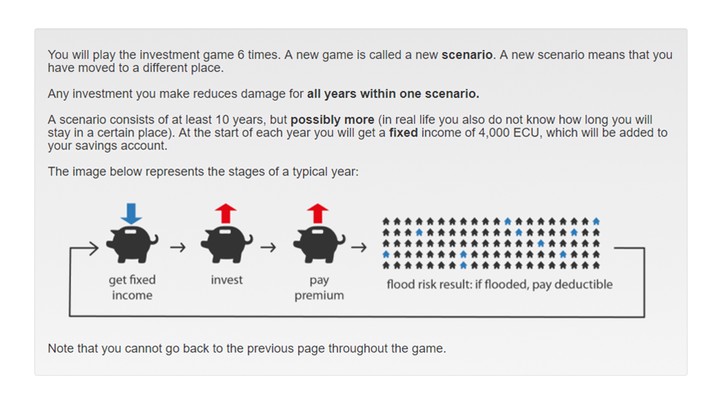Risk reduction in compulsory disaster insurance: Experimental evidence on moral hazard and financial incentives

Abstract
In a world in which economic losses due to natural disasters are expected to increase, it is important to study risk reduction strategies, including individual investments of homeowners in damage reducing (mitigation) measures. We use a lab experiment (N = 357) to investigate the effects of different financial incentives, probability levels and deductibles on damage reducing investments in a natural disaster insurance market with compulsory coverage. In particular, we examine how these investments are jointly influenced by financial incentives, like a disincentive from moral hazard or positive incentives from premium discounts or a mitigation loan, and behavioral characteristics, like individual risk and time preferences. We find that investments increase when the expected value of damage increases (i.e. higher deductibles, higher probabilities). Moral hazard is found in the high probability scenarios (15%), but not in the low probability scenarios (3%). This observation suggests that moral hazard is less of an issue in a natural disaster insurance market where probabilities are low. Our results demonstrate that a premium discount can increase investments in damage reduction, as can the behavioral characteristics of risk aversion, perceived efficacy of protective measures and worry about flooding.